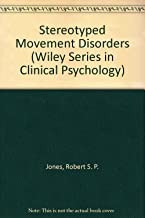Stereotypic Movement Disorder
Stereotypic movement disorder is a condition in which a person makes repetitive, purposeless movements. These can be hand waving, body rocking, or head banging. The movements interfere with normal activity or may cause bodily harm.
Cluster Number:
Wiki Number: PW213
Diagnosis: Stereotypic Movement Syndrome
US Patients:
World Patients:
Sex Ratio:
Age Onset: genetic from the mother, birth of baby boys, can occur at any age
Brain Area:
Symptoms: child repeatedly does a nonfunctional motor behavior, e.g. hand waving or head banging) that intereferes or causes the child injury
Progression: may include rocking or rhythmic movements, self-biting, self-hitting, skinpicking, thumb-sucking, nail-biting, hair-pulling,
Causes: over-production of uric acid or deficiency in the counter-base; higher risk for those with intellectual disability
Medications: Medication(s) for gout temporarily reduces it, but does not cure it; an unspecified medication may reduce (permanent) self-injury
Therapies: May be helped by non-autistic habit-reversal-training or decoupling
Youtube Video:
Movement Disorder Treatment From Start To Present
Youtube Video:
A Patient Shares Her Journey Through Movement Disorder
Amazon or Library Book: Stereotyped Movement Disorder
(Older Book, Published 1995)
Click the book to link or order from Amazon. (This book is expensive.)

